Welcome to WordPress. This is your first post. Edit or...
Read More
Discovering the World, one adventure at a time

Discovering the World, one adventure at a time
Travel guide
Asia
Begin your adventure with our Asia travel guide, the perfect companion for discovering the diverse wonders of this vast continent. From the bustling streets of Tokyo to the tranquil beaches of Thailand, our guide will lead you through Asia’s most enchanting experiences and destinations. Explore ancient traditions, vibrant cultures, and breathtaking landscapes as you journey through the heart of Asia with us.
Discover the Wonders of Asia: Your Ultimate Travel Guide
Dive into the heart of Asia, a continent where the tapestry of life is woven with vibrant cultures, ancient traditions, and breathtaking landscapes. This is not just a destination but a journey into a world where every corner holds a new discovery, every path leads to unexpected adventures, and every moment is a step closer to understanding the diverse beauty of the largest continent on Earth.
From the towering peaks of the Himalayas to the serene beaches of Southeast Asia, from the bustling streets of Tokyo to the tranquil villages along the Silk Road, Asia offers a contrast of experiences that defy expectations. It’s a place where the past and the future coexist, creating a unique blend of history and innovation that captivates the soul.
Begin your adventure in the vast expanses of Northern Asia, where the rugged wilderness of Siberia stretches across the horizon, showcasing the raw beauty of nature. As you move southward, China unfolds as a land rich in history, where ancient stories are etched into the very landscape, from the Great Wall’s imposing presence to the Yangtze River’s gentle flow.
Journeying eastward, Japan awaits with its exquisite blend of tradition and modernity. Here, you can stroll through parks awash with cherry blossoms in Kyoto, then immerse yourself in Tokyo’s electrifying cityscape by night. Not far away, Korea beckons with its vibrant culture and culinary delights, offering a glimpse into a society where historical roots run deep amidst rapid modernization.
The allure of Southeast Asia lies in its endless array of islands and sun-drenched shores, inviting you to a paradise where the azure sea meets pristine beaches. Thailand, Indonesia, Malaysia, and the Philippines are just a few of the gems in this region, each promising an adventure filled with exploration and relaxation.
India’s kaleidoscope of cultures offers an unparalleled journey of discovery, from the sacred rituals along the Ganges to the majestic palaces of Rajasthan. Beyond, the Middle East unravels as a land of ancient wonders, where the legacy of bygone civilizations permeates through art, architecture, and tradition.
This guide to Asia is more than a collection of destinations; it’s a curated journey through the heart of a continent that promises to enchant, inspire, and transform. Whether in search of adventure, spiritual enrichment, culinary journeys, or the simple joy of discovering something new, Asia’s diverse tapestry offers something for every traveler.
Embark on this unforgettable journey and let Asia reveal its secrets to you. Every step is an opportunity to witness the continent’s magnificent diversity, where each experience enriches the soul and leaves you yearning for more. Welcome to the essence of Asia—where every visit is a voyage into the heart of life’s greatest adventures.
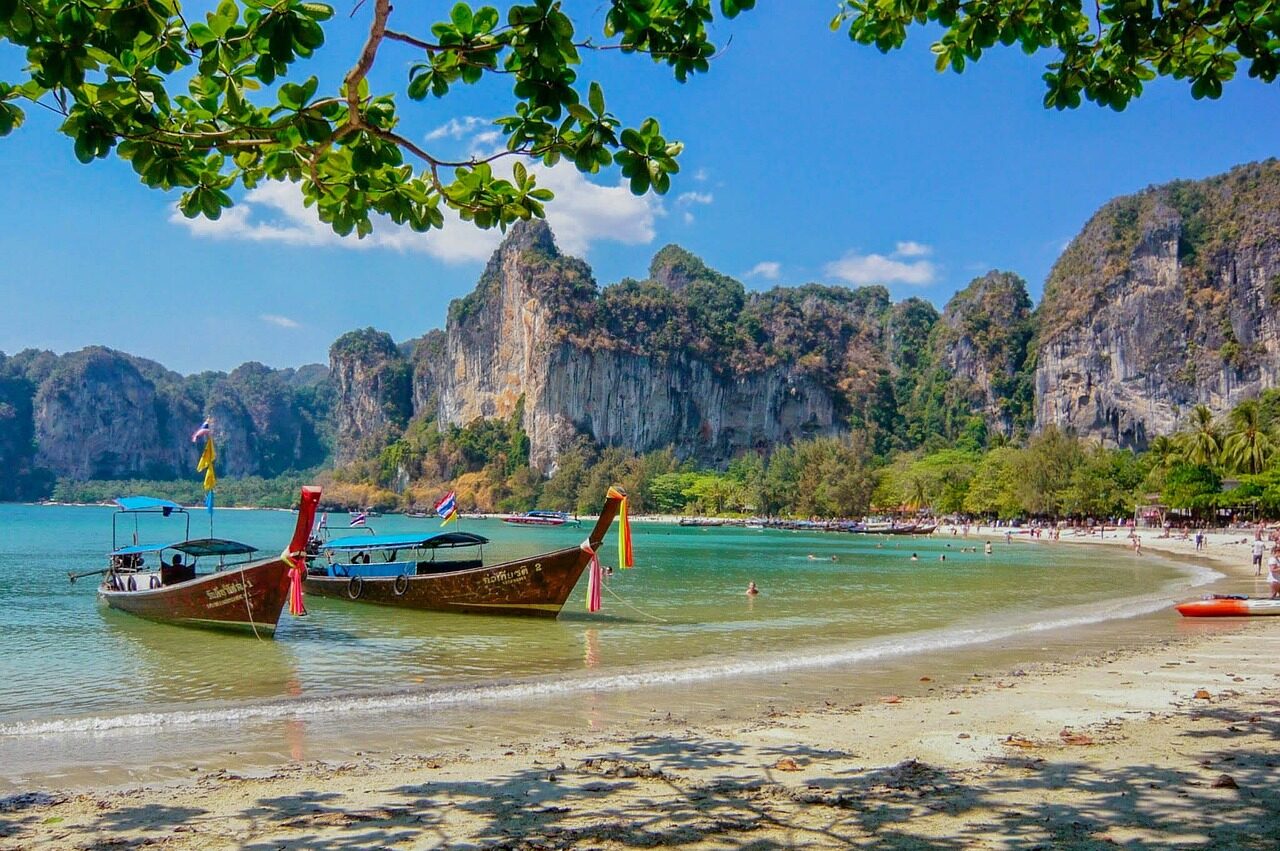

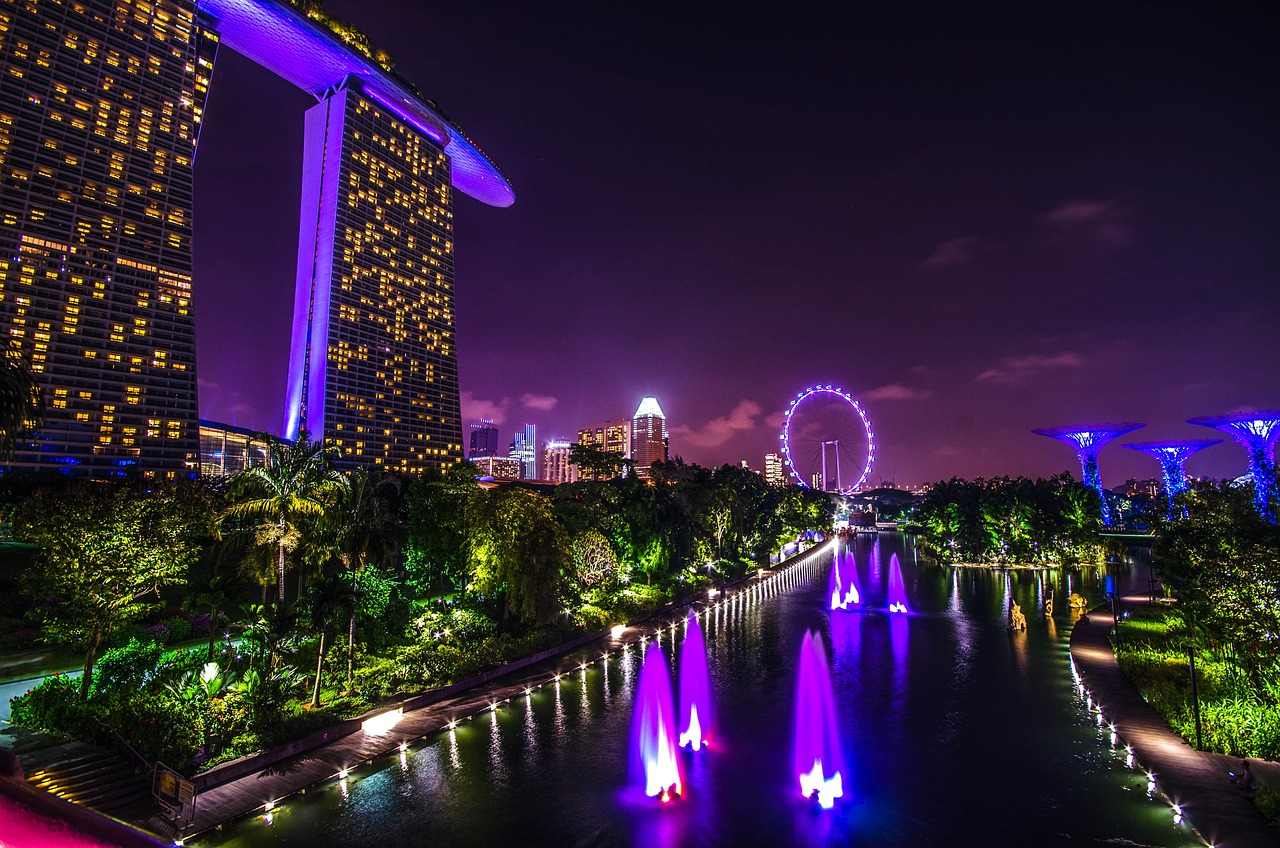

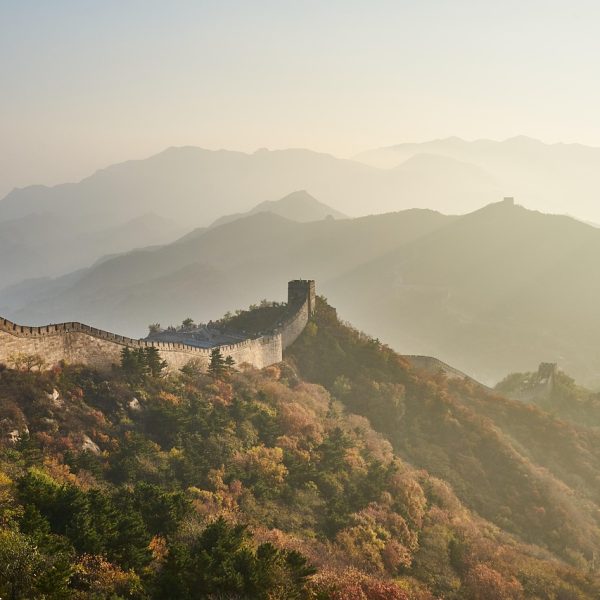
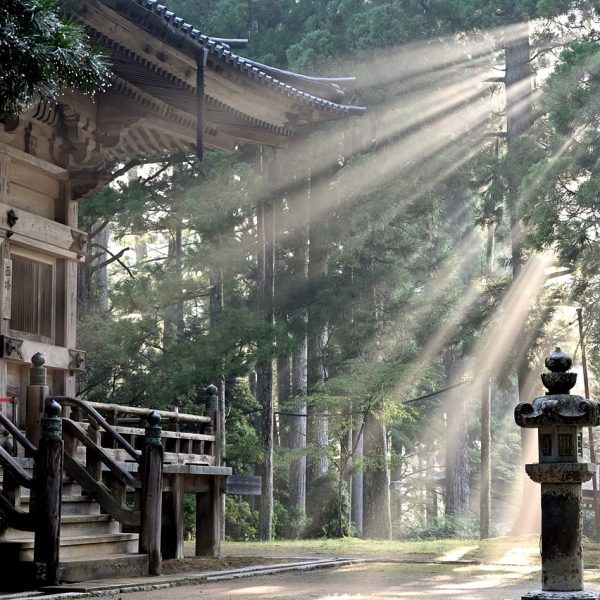
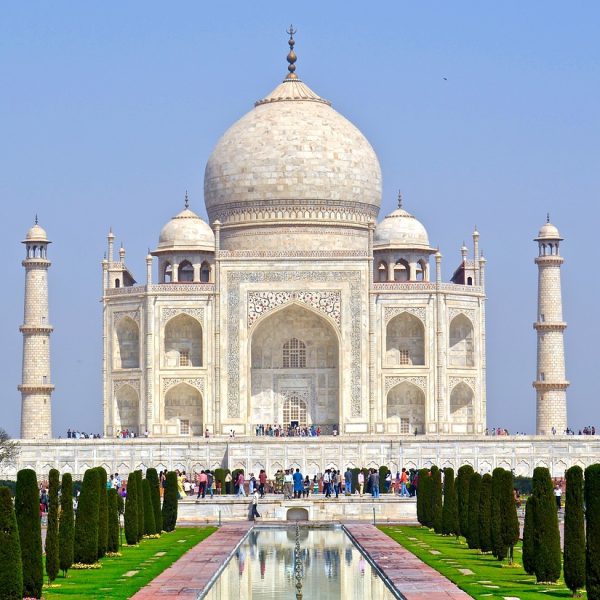

Travel tips and advice for exploring Asia
Embrace local cultures
Immersing yourself in the local cultures of Asia enriches your travel experience immeasurably. Attend traditional festivals, try wearing local attire for a day, and always show respect for the customs and traditions you encounter. This openness will not only deepen your understanding but also open doors to authentic experiences.
Try the street food
Asia's street food scene offers a tantalizing array of flavors, from the spicy streets of Bangkok to the bustling markets of Taipei. While indulging in these culinary delights, prioritize cleanliness and choose stalls with high turnover to ensure the freshness of your meals.
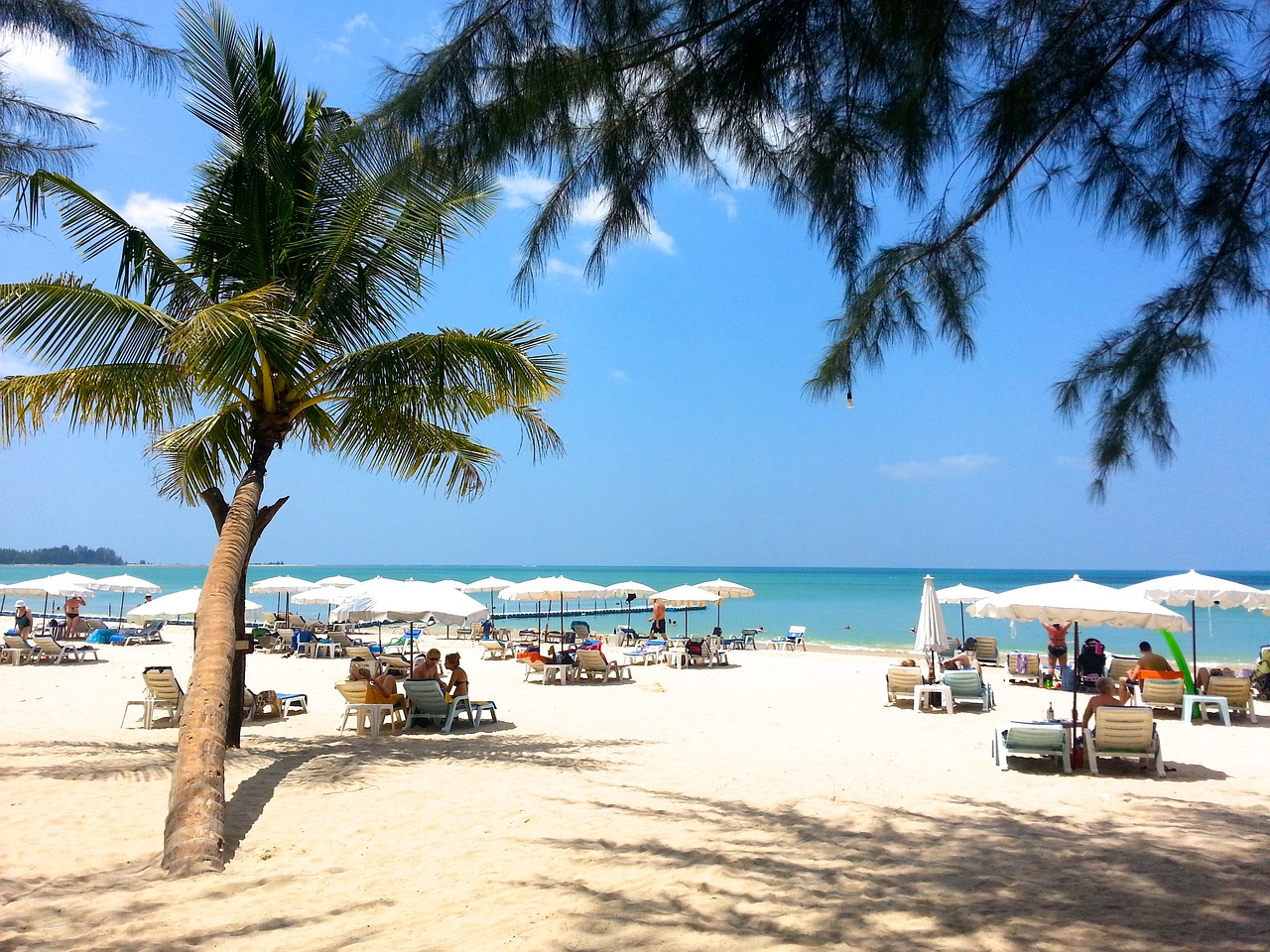
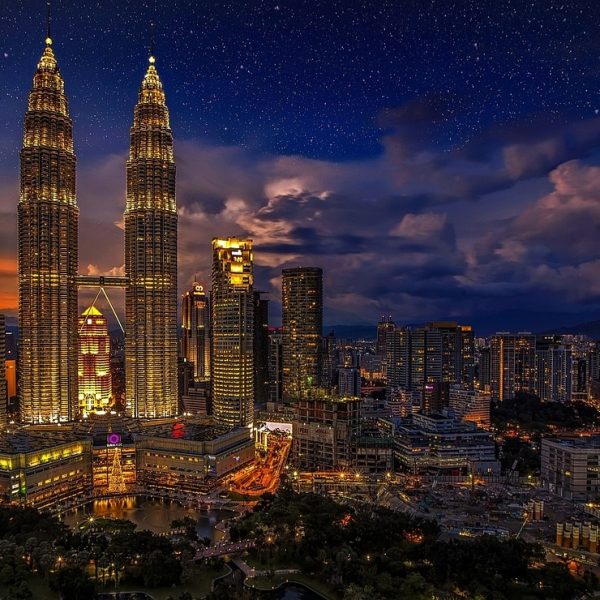
Learn basic phrases
A few basic phrases in the local language can go a long way in Asia. Learning to say hello, please, thank you, and excuse me in the local dialect can significantly enhance your interaction with locals, making your journey more meaningful and respectful.
Pack light and smart
Given Asia's varied geography and climate, packing light but intelligently is key. Opt for layers and breathable fabrics to adapt to changing weather conditions, and don't forget essentials like a good pair of walking shoes and a lightweight rain jacket.
Stay hydrated
The combination of heat and humidity in many parts of Asia can quickly lead to dehydration. Carry a reusable water bottle with you at all times to stay hydrated, and always ensure the water you're drinking is safe or properly treated.
Use public transportation
Navigating Asia's public transport systems is not only economical but offers a slice of local life. Whether it's riding the metro in Seoul, taking a tuk-tuk in Bangkok, or boarding a train in India, each experience is unique and contributes to the adventure.

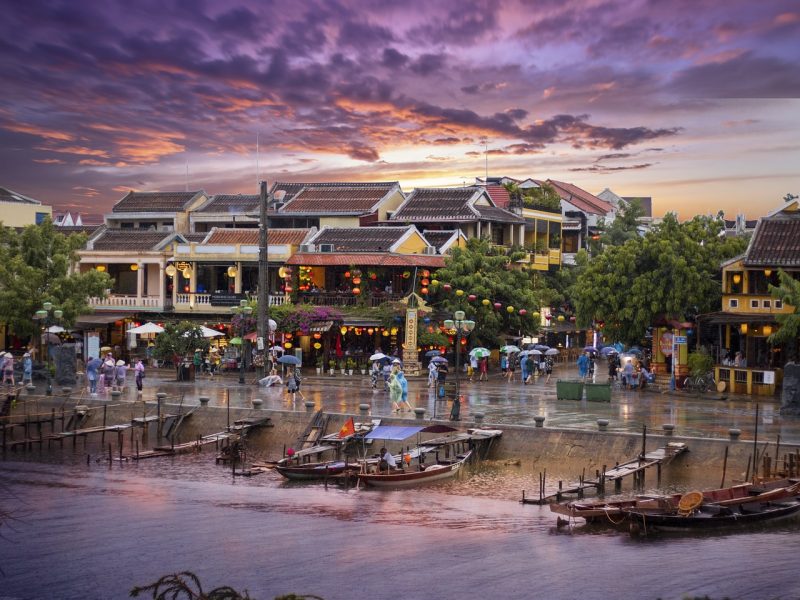
Respect religious sites
Asia is home to a profound spiritual heritage. Visiting temples, mosques, and shrines requires modest dress and adherence to local customs, such as removing shoes or covering your head, to show respect for these sacred spaces.
Bargain with respect
Bargaining is an integral part of the shopping culture in many Asian countries. Approach it with a smile and a respectful attitude, and remember that while getting a good deal is part of the fun, it's also important to pay a fair price that respects the seller's work.
Protect yourself from the sun
The sun in Asia can be particularly strong. Protect your skin with high SPF sunscreen, wear a wide-brimmed hat and sunglasses, and seek shade during the midday sun to avoid sunburn and heatstroke.
Be cautious with wildlife encounters
Wildlife tourism in Asia should be approached with caution and respect. Choose experiences that promote the welfare and conservation of animals, and avoid those that exploit or harm wildlife for entertainment.

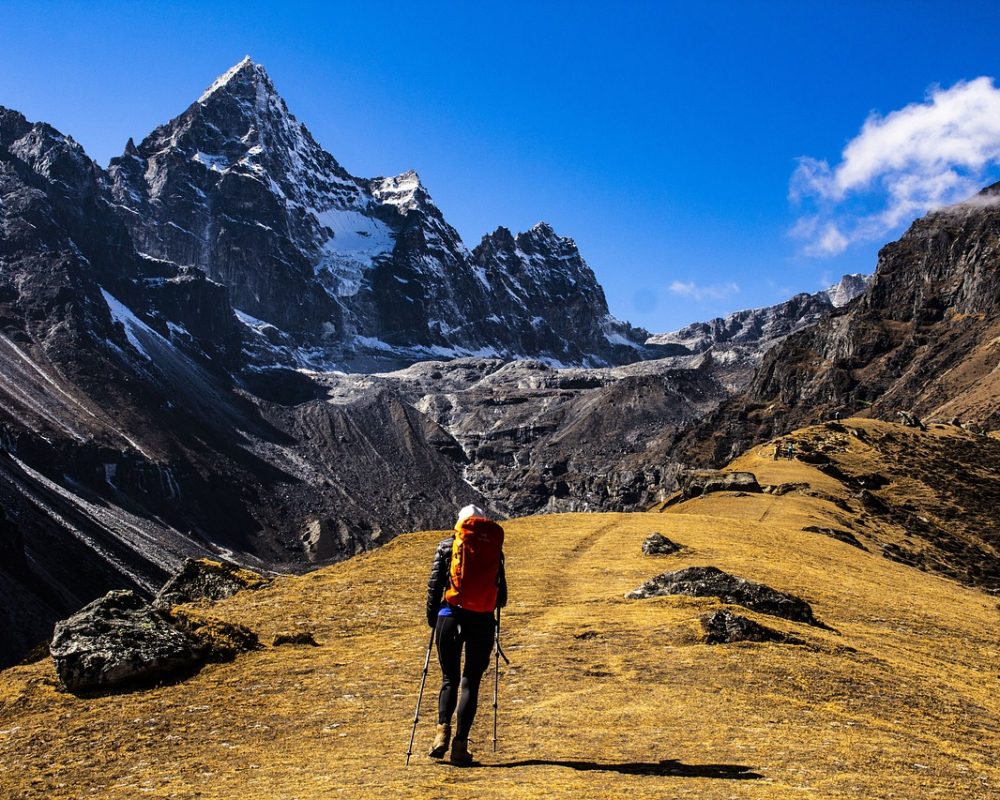
Manage your Visas and Passports
Visa requirements in Asia can vary widely between countries. Research the requirements well in advance, make sure your passport is valid for at least six months beyond your travel dates, and has sufficient blank pages for any necessary stamps.
Stay open to new experiences
Asia is a continent that thrives on the unexpected. Be flexible and open to changes in your itinerary. Embracing the unexpected detour or local recommendation often leads to the most memorable parts of your journey.
Explore Asia through our latest travel articles and guides
Dive into the heart of Asia with our carefully curated collection of travel articles and guides. From bustling metropolises to tranquil countryside, our latest posts offer in-depth insights, tips, and stories to inspire your next Asian adventure. Whether you’re planning to explore ancient temples, indulge in culinary delights, or embark on scenic treks, our articles are here to guide you through the rich tapestry of experiences that Asia has to offer. Keep exploring below to discover the latest trends, hidden gems, and travel advice tailored for your journey through this diverse and captivating continent
Top 10 things to see and do in Asia
- Visit the Great Wall of China
Traverse the ancient steps of the Great Wall of China, a monumental structure that winds across mountains and valleys. This iconic symbol of China’s historical resilience offers breathtaking vistas and a profound sense of history that stretches over 13,000 miles, making it a pivotal experience for any visitor to Asia. - Explore the Temples of Angkor, Cambodia
Immerse yourself in the mystical aura of Angkor Wat and the surrounding temple complexes. As the largest religious monument in the world, this UNESCO World Heritage site in Cambodia showcases intricate carvings and stunning architectural designs, telling tales of a bygone era that captivates historians, architects, and spiritual seekers alike. - Experience Tokyo, Japan
Step into the bustling heart of Tokyo, a city that perfectly balances modernity with tradition. From the electronic wonderland of Akihabara to the tranquility of the Imperial Gardens, Tokyo offers endless exploration opportunities. Experience the fast-paced Shibuya crossing, indulge in culinary delights at a local izakaya, and soak in the unique blend of the latest technology with enduring customs. - Enjoy the Beaches of Thailand
Thailand’s exotic beaches are a paradise for sun-seekers and adventurers. With their stunning coral reefs, turquoise waters, and lush backdrops, destinations like Phuket, Ko Samui, and Krabi invite you to unwind or partake in water sports. Each beach has its own charm, offering a slice of paradise with vibrant nightlife, serene retreats, and culinary feasts. - Go Trekking in Nepal
Nepal’s rugged trails offer some of the world’s most unforgettable trekking experiences. From the Everest Base Camp trek, offering awe-inspiring views of the world’s highest peak, to the diverse landscapes of the Annapurna Circuit, adventurers can immerse themselves in the beauty of the Himalayas, experiencing the warmth and hospitality of the Nepalese culture along the way. - Float in the Dead Sea, Jordan
The Dead Sea, bordering Jordan, Israel, and Palestine, is a natural wonder known for its hyper-saline water, allowing effortless floating. Rich in minerals and surrounded by stunning landscapes, a visit here is rejuvenating for the body and soul. The unique environment also offers therapeutic benefits, making it a must-visit for wellness enthusiasts. - Witness the Cherry Blossoms in Japan
The cherry blossom season, or Sakura, is Japan’s most picturesque time of year. Cities like Kyoto, Tokyo, and Osaka are transformed with soft pink hues, creating a magical backdrop for picnics, photography, and leisurely strolls. This fleeting beauty symbolizes the transient nature of life and is celebrated with festivals and gatherings, offering a deeply cultural and visually stunning experience. - Visit the Taj Mahal, India
The Taj Mahal, a UNESCO World Heritage site, stands as a testament to eternal love and is considered one of the most beautiful buildings in the world. Located in Agra, India, this magnificent mausoleum, built by Emperor Shah Jahan in memory of his wife Mumtaz Mahal, combines elements from Islamic, Persian, Ottoman Turkish, and Indian architectural styles, making it a masterpiece of Mughal architecture. - Explore the Islands of Indonesia
Indonesia’s vast archipelago offers an unparalleled diversity of experiences, from the spiritual ambiance of Bali with its majestic temples and vibrant arts scene to the prehistoric allure of Komodo National Park, home to the Komodo dragon. Each island presents its own unique adventures, landscapes, and cultural treasures, inviting travelers to explore its rich biodiversity and indigenous heritage. - Attend a Traditional Festival in Asia
Engaging in traditional festivals across Asia provides a deep dive into the continent’s rich cultural tapestry. Celebrate Diwali, the festival of lights, in India; witness the sky illuminate during the Lantern Festival in China; or join in the water-soaked festivities of Songkran in Thailand. Each festival offers a unique opportunity to participate in age-old traditions, enjoy local delicacies, and connect with the heart and soul of Asian cultures.
Prices and Costs in Asia
Asia, with its vast diversity, offers a wide range of experiences that can fit almost any budget. From the budget-friendly streets of Southeast Asia to the more luxurious offerings of East Asia’s megacities, understanding the costs involved is crucial for planning your journey. Here’s what you need to know about navigating prices and costs in Asia:
Accommodation in Asia: A Guide to Your Options
Asia’s accommodation landscape caters to a vast spectrum of travelers, from the budget-conscious backpacker to the luxury seeker. The choices are as diverse as the continent itself, offering everything from traditional homestays to opulent resorts. Understanding your options will help you make the best decision for your travel style and budget.
Budget Accommodation
- Hostels: Widely available across the continent, hostels in Asia are an excellent choice for solo travelers and those on a tight budget. They offer dormitory-style rooms and sometimes private rooms, with prices starting as low as $5 per night in countries like Vietnam, Cambodia, and Indonesia. Hostels are not only about saving money; they’re also great places to meet fellow travelers.
- Guesthouses and Budget Hotels: For those who prefer more privacy than a hostel dorm offers, guesthouses and budget hotels provide simple, clean accommodations often run by local families. Prices range from $10 to $30 per night and often include amenities like free Wi-Fi and breakfast.
- Homestays and Local Inns: Staying in a homestay or a local inn allows travelers to immerse themselves in the local culture and lifestyle. Prices are comparable to guesthouses and budget hotels but offer a more personal experience.
Mid-Range Accommodation
- Boutique Hotels: Across Asia, boutique hotels offer a blend of local charm and modern comforts, often situated in prime locations. Prices for these unique accommodations can range from $30 to $100 per night, providing a more intimate and often culturally rich experience compared to larger hotel chains.
- Serviced Apartments: For longer stays or for those who prefer a home-like environment, serviced apartments are available in major cities. These can be an excellent value, offering more space and amenities like kitchens, with prices varying widely based on location and level of luxury.
Luxury Accommodation
- 5-Star Hotels and Resorts: Asia is home to some of the world’s most luxurious hotels and resorts, offering impeccable service, exquisite dining, and world-class amenities. Destinations like the Maldives, Bali, and urban centers like Singapore and Hong Kong boast iconic properties. Prices start at $100 per night and can go up to several thousand dollars for the most exclusive experiences.
- Private Villas: For ultimate privacy and luxury, renting a private villa can be the perfect choice. Popular in destinations like Thailand and Bali, private villas come with features like personal pools, beach access, and staff. Prices vary greatly but start at around $150 per night for smaller villas.
Tips for Finding the Best Accommodation
- Book in Advance: Especially for popular destinations and during peak travel seasons, booking your accommodation in advance can secure better rates and ensure availability.
- Read Reviews: Online reviews can provide valuable insights into the quality of the accommodation, helping you set realistic expectations.
- Consider Location: While it might be tempting to save money by staying outside city centers or popular areas, consider the cost and time of transportation to attractions and activities.
- Check for Deals: Many booking platforms offer deals, especially for longer stays or last-minute bookings. Signing up for newsletters and alerts can keep you informed about special promotions.
By understanding the range of accommodation options available across Asia, travelers can make informed choices that enhance their travel experience while adhering to their budgetary constraints. Whether you’re seeking the camaraderie of a hostel, the charm of a boutique hotel, or the indulgence of a luxury resort, Asia’s accommodation offerings are as diverse and welcoming as the continent itself.
Food and Dining in Asia: A Culinary Adventure
Asia’s culinary landscape is as vast and varied as its geography, offering an endless array of flavors, ingredients, and dining experiences that cater to every taste and budget. From street food stalls to high-end restaurants, the continent’s food scene is a central part of the travel experience, reflecting the rich cultural and historical diversity of its many countries.
Street Food and Local Eateries
- The Heart of Asian Cuisine: Street food in Asia is not just a meal; it’s an experience. Each country boasts its own specialties, offering authentic, delicious, and incredibly affordable options. In places like Bangkok, Taipei, and Hanoi, you can enjoy a full meal for $1-$5. These dishes, ranging from Thailand’s Pad Thai to India’s Chaat, are prepared fresh in front of you, allowing a glimpse into the local culinary culture.
- Local Eateries and Food Markets: For a slightly more formal but still authentic dining experience, local eateries and food markets offer a wider range of dishes in a sit-down setting. These places are where locals dine, ensuring you’re getting genuine flavors. Prices remain low, with meals typically costing between $2-$10, providing an affordable way to sample a variety of dishes.
Mid-Range Restaurants
- A Blend of Tradition and Modernity: Asia’s mid-range restaurants often serve traditional dishes with a modern twist, in a more comfortable dining setting. This segment includes themed cafes, family-run restaurants, and regional cuisine specialists. In cities across Asia, these restaurants offer a deeper dive into the culinary traditions for $10-$50 for two, making them perfect for travelers looking to explore local flavors in a more relaxed environment.
High-End Restaurants and Fine Dining
- Culinary Excellence: For those looking to indulge, Asia’s major cities boast an impressive array of high-end restaurants and fine dining establishments. From internationally acclaimed chefs to local culinary masters, these venues offer exquisite meals in luxurious settings. Cities like Tokyo, which holds the record for the most Michelin-starred restaurants, Singapore, and Hong Kong are hotspots for those seeking the pinnacle of culinary sophistication. Prices can range from $50 to over $200+ for two, depending on the restaurant and menu.
Vegetarian and Dietary Restrictions
- Accommodating All Diets: Asia is generally accommodating of dietary restrictions, with many cultures having a deep-rooted tradition of vegetarianism, particularly India and Buddhist countries. Most restaurants and even street food vendors can provide or adjust meals to meet vegetarian, vegan, and other dietary needs, making it easier for all travelers to enjoy Asia’s diverse culinary offerings.
Tips for Dining in Asia
- Be Adventurous: Don’t shy away from trying new dishes. Asia’s culinary diversity is one of its greatest treasures.
- Ask Locals: Local recommendations can lead you to the best dining spots that might not be on every travel guide.
- Check Hygiene: While street food is a must-try, opt for stalls with high turnover and good hygiene practices to avoid foodborne illnesses.
- Learn Local Etiquette: Understanding local dining etiquette, such as whether it’s customary to tip or how to use chopsticks properly, can enhance your dining experience.
Exploring the food and dining options in Asia is an adventure in itself, offering travelers an authentic taste of each country’s culture and traditions. Whether you’re enjoying a simple meal by the roadside or dining in luxury, the flavors of Asia promise to leave a lasting impression on your palate and your travel memories.
Transportation in Asia: Navigating Your Way Across the Continent
Transportation in Asia offers a wide array of options, ranging from traditional rickshaws to state-of-the-art bullet trains, reflecting the continent’s blend of ancient traditions and rapid modernization. Understanding the various modes of transportation can help you efficiently and safely navigate the diverse landscapes of Asia, whether you’re traversing bustling cities or exploring remote countryside.
Public Transportation
- Efficient Urban Networks: In major Asian cities like Tokyo, Seoul, and Singapore, public transportation systems are highly efficient, clean, and punctual. Metro and bus networks cover extensive areas, offering an affordable and convenient way to explore urban centers. Fares typically range from $0.20 to $2.00 per journey, making it an economical choice for travelers.
- Regional Trains and Buses: For longer distances, regional trains and buses connect cities and towns across countries. Countries like China and Japan are known for their high-speed rail networks, which provide a fast and comfortable way to travel across vast distances. Prices vary based on distance and class of service, but booking in advance can often secure discounts.
Taxis and Ride-Sharing
- Convenient for Short Distances: Taxis are widely available in cities across Asia and can be a convenient option for short distances or when public transportation isn’t available. Ride-sharing apps like Grab and Gojek have also become popular in Southeast Asia, offering services from rides and food delivery to payment services. Fares are generally reasonable, but it’s advisable to agree on the fare beforehand or ensure the meter is used to avoid overcharging.
Motorbikes and Scooters
- A Popular Choice in Southeast Asia: In many Southeast Asian countries, motorbikes and scooters are the primary mode of transportation for locals. Renting a scooter can give you the freedom to explore at your own pace, especially in areas with limited public transportation. Rental costs are affordable, but ensure you’re comfortable with local driving conditions and have the necessary license and insurance.
Domestic Flights
- Covering Large Distances: Given Asia’s vast size, domestic flights can be a time-saving option for covering large distances or traveling between islands, such as in Indonesia and the Philippines. A number of budget airlines offer competitive fares, making air travel more accessible. Booking in advance and being flexible with your travel dates can help you find the best deals.
Traditional and Unique Modes of Transport
- Experiencing Local Culture: Asia offers unique transportation experiences that are integral to its local cultures, such as Thailand’s tuk-tuks, India’s auto-rickshaws, and the Philippines’ jeepneys. While not always the most efficient, they provide a memorable and authentic travel experience, often at a low cost.
Tips for Navigating Transportation in Asia
- Plan Ahead: Research transportation options and routes before you travel. Apps and websites can provide valuable information on schedules, fares, and routes.
- Carry Small Change: When using public transportation or paying for short rides, having small change can simplify transactions.
- Be Mindful of Safety: Always prioritize safety, especially when renting motorbikes or using less regulated forms of transportation.
- Respect Local Customs: Be aware of and respect local customs and regulations related to transportation, including any restrictions on ride-sharing services or specific requirements for foreign drivers.
Navigating transportation in Asia can be an adventure, offering insights into the continent’s dynamic blend of modernity and tradition. By understanding the available modes of transport and planning accordingly, you can ensure a smooth and enjoyable journey across this diverse and fascinating continent.
Attractions and Activities in Asia: Exploring the Rich Tapestry of Experiences
Asia, with its vast expanse and deep-rooted cultures, offers a plethora of attractions and activities that cater to every interest, from ancient historical sites and natural wonders to cutting-edge technology and vibrant nightlife. Whether you’re a history buff, nature lover, adventure seeker, or cultural enthusiast, Asia’s diverse offerings ensure that every traveler finds something to marvel at or participate in.
Historical and Cultural Sites
- Ancient Wonders: Asia is home to some of the world’s most significant historical sites, such as the Great Wall of China, the temples of Angkor in Cambodia, and India’s Taj Mahal. These sites not only offer a glimpse into the past but also showcase the architectural and cultural achievements of ancient civilizations. Entrance fees are generally affordable, often under $10, providing accessible insights into the rich history of the continent.
- Cultural Experiences: Participate in traditional tea ceremonies in Japan, take a calligraphy class in China, or attend a live traditional dance performance in Bali. These cultural experiences allow for a deeper understanding and appreciation of Asia’s diverse heritage, with many activities being free or low-cost.
Natural Attractions
- Stunning Landscapes: From the Himalayas’ towering peaks to the pristine beaches of Southeast Asia and the rolling hills of the Japanese countryside, Asia’s natural landscapes are incredibly diverse. Activities like hiking, snorkeling, and wildlife safaris are popular ways to explore the natural beauty, with costs varying from $20-$100+ depending on the length and type of activity.
- National Parks and Nature Reserves: Asia’s national parks and reserves, such as Indonesia’s Komodo National Park or Thailand’s Khao Sok National Park, offer unique opportunities to witness wildlife and natural scenery. Entrance fees are typically modest, ensuring that these breathtaking natural wonders are accessible to all.
Adventure and Leisure Activities
- Thrill-Seeking Adventures: For adrenaline junkies, Asia offers a range of activities from bungee jumping in Nepal to scuba diving in the Philippines. These activities are regulated and offered by reputable companies, with prices reflecting the level of risk and equipment involved.
- Relaxation and Wellness: Asia is also a haven for those seeking relaxation and wellness. Indulge in traditional massages, yoga retreats, or meditation sessions, particularly in places like Thailand and India, where wellness is deeply ingrained in the culture. Prices can range from very affordable for simple massages to higher rates for luxury spa experiences or comprehensive wellness retreats.
Urban Exploration
- Dynamic Cities: Asia’s cities are a blend of tradition and modernity. Explore the bustling markets of Bangkok, the futuristic skyline of Singapore, or the historic streets of Kyoto. Urban attractions often include museums, parks, and shopping districts, with many cities offering free or low-cost options for visitors.
Festivals and Seasonal Events
- Festive Celebrations: Asia’s calendar is filled with vibrant festivals, such as Diwali in India, the Cherry Blossom Festival in Japan, and the Lantern Festival in China. These events offer unique experiences that are often free to attend, though some specific activities or venues may charge a fee.
Tips for Enjoying Attractions and Activities
- Research and Plan Ahead: Some attractions may require advance booking, especially during peak tourist seasons or for limited-access sites.
- Check for Tourist Passes: Many cities offer tourist passes that provide discounted access to multiple attractions and public transportation.
- Be Respectful: Always show respect when visiting cultural sites and natural attractions, adhering to local customs and conservation practices.
Exploring the attractions and activities in Asia can be an enriching experience, offering endless opportunities to connect with the continent’s history, culture, nature, and people. With careful planning and an open mind, travelers can immerse themselves in the myriad experiences Asia has to offer.
Tipping and Service Charges in Asia: Navigating Cultural Norms
Tipping and understanding service charges in Asia can be a complex matter due to the continent’s diverse cultures and customs. Unlike in some Western countries where tipping is more standardized, practices across Asia vary significantly from one country to another. Being aware of these nuances can help you navigate these situations respectfully and appropriately.
Understanding Service Charges
- Service Charges in Restaurants and Hotels: Many restaurants and hotels in Asia add a service charge to the bill, typically ranging from 5% to 10%. This charge is meant to replace tipping, and in establishments where it’s applied, additional tipping is not mandatory. Always review your bill to see if a service charge has been included.
Tipping Practices by Country
- No Tipping Required: In countries like Japan and South Korea, tipping is not a standard practice and can sometimes be considered rude. The service culture in these countries is exceptionally high, and payment for services rendered is viewed as fully covered by the price charged.
- Minimal Tipping: In China and Malaysia, tipping is not traditionally expected, but as tourism grows, it is becoming more common in high-end restaurants and hotels, especially in urban areas. A small gratuity for exceptional service is appreciated but not required.
- Moderate Tipping Expected: In countries like Thailand, India, and Indonesia, tipping is more customary, especially in tourist-centric areas. A tip of 10% can be expected in restaurants if a service charge is not already included on the bill. Similarly, tipping hotel staff, tour guides, and drivers for good service is appreciated.
- Variable Practices: In the Philippines and Vietnam, tipping practices can vary. While not always expected, tips are appreciated for good service in restaurants, taxis, and personal services. A general guideline is to leave a 5-10% tip in restaurants if no service charge is applied and a small amount for taxi drivers or hotel staff.
Tips for Tipping
- Follow Local Customs: Research or ask locals about the tipping customs in the specific country you are visiting to ensure you’re following appropriate practices.
- Be Discreet: When tipping, do so discreetly and respectfully. In cultures where tipping is not the norm, making a show of leaving a tip can create discomfort.
- Use Local Currency: Tipping in local currency is preferred, as it is more convenient for the recipient to use.
- Consider the Service: Tipping is ultimately a reward for good service. Consider the quality of service received when deciding whether and how much to tip.
Tipping in Group Settings
- Group Tours and Activities: For group tours or activities, tipping the guide and driver at the end of the service is common, especially if their service enhanced your experience. A collective tip from the group is often more comfortable and practical than individual tips.
Navigating tipping and service charges in Asia requires an understanding of local customs and a sensitivity to cultural practices. By adhering to these guidelines, travelers can show appreciation for services received in a manner that respects local traditions and contributes positively to their travel experience in Asia.
Tips for Managing Costs While Traveling in Asia
Traveling through Asia offers a spectrum of experiences that can accommodate any budget. However, the key to making the most of your journey—without breaking the bank—lies in smart planning and savvy decision-making. Here are some strategies to help you manage costs effectively while exploring the diverse and captivating continent of Asia.
Plan and Budget Ahead
- Research Costs: Before your trip, research the average costs for accommodations, meals, transportation, and activities in the destinations you plan to visit. This information will help you create a realistic budget.
- Set a Daily Budget: Based on your research, set a daily spending limit that covers all your travel expenses. Stick to this budget to avoid overspending.
Save on Accommodation
- Book in Advance: Especially during peak travel seasons, booking your accommodation early can secure better rates. Look for deals on hotel booking websites or consider alternative lodging options like hostels, guesthouses, or short-term rental apartments.
- Consider Location: Staying in centrally located areas might be slightly more expensive, but it can save you time and money on transportation. Alternatively, staying just outside major tourist spots can offer better deals if public transportation is easily accessible.
Be Smart About Food and Dining
- Eat Like a Local: Street food and local eateries are not only cheaper but also offer authentic and delicious options. Markets are great places to try a variety of local dishes at low prices.
- Avoid Tourist Traps: Restaurants in tourist-heavy areas tend to be more expensive and less authentic. Venture off the beaten path to find better prices and more genuine experiences.
Utilize Public Transportation
- Research Passes and Cards: Many cities offer tourist passes or transportation cards that provide unlimited access to public transport for a set number of days, which can be cost-effective.
- Walk or Bike: Exploring by foot or renting a bike is not only budget-friendly but also allows you to discover hidden gems you might miss otherwise.
Prioritize Your Activities
- Free and Low-Cost Attractions: Many museums, temples, and parks offer free entry or have specific days when admission is discounted or free. Prioritize these in your itinerary.
- Choose Activities Wisely: While it’s tempting to do everything, focus on activities and experiences that are unique to the destination and offer the most value for your money.
Avoid Peak Season
- Travel During Shoulder or Off-Peak Seasons: Prices for flights, accommodations, and even some activities can be significantly lower during the off-peak times. Additionally, you’ll benefit from fewer crowds.
Manage Money Wisely
- Use Local Currency: While some places might accept USD or other foreign currencies, you’ll generally get a better deal paying in the local currency.
- Be Mindful of Exchange Rates and Fees: Withdraw money from ATMs in larger amounts to avoid multiple transaction fees, and be aware of the exchange rates.
Leverage Technology
- Use Apps and Websites: Utilize travel apps and websites for booking accommodations, flights, and even meals. Many offer discounts, rewards, and last-minute deals that can save you money.
Stay Flexible
- Be Open to Changes: Sometimes, changing your travel dates by a day or two or opting for a different destination can lead to significant savings. Flexibility can be one of your greatest assets in managing travel costs.
By adopting these strategies, you can navigate the financial aspects of traveling in Asia more effectively, ensuring that your adventure is not only memorable but also affordable. Asia’s rich cultural tapestry and natural beauty can be experienced on any budget, with a little planning and creativity.
Best Time to Visit Asia: Seasonal Guide for Travelers
Asia’s vast and diverse landscape means that the best time to visit varies significantly across the continent, depending on climate, cultural events, and personal travel preferences. Understanding the regional climates and peak seasons can help you plan your trip to coincide with the best possible weather and experiences. Here’s a seasonal guide to help you determine the best time to visit different parts of Asia.
Southeast Asia (Thailand, Vietnam, Cambodia, Indonesia, etc.)
- Best Time: November to February, during the dry season, when the weather is cooler and less humid, making it ideal for exploring temples, beaches, and cities.
- Consider: The wet season (June to October) can bring heavy rains and higher humidity, but also fewer tourists and lush landscapes.
East Asia (China, Japan, South Korea)
- Best Time: Spring (March to May) and autumn (September to November) offer mild temperatures, making it comfortable to explore urban and rural areas. Spring is particularly famous for cherry blossoms in Japan and South Korea.
- Consider: Summers can be hot and humid, while winters, especially in northern China and South Korea, can be bitterly cold.
South Asia (India, Nepal, Sri Lanka)
- Best Time: The cooler, drier months from October to March are generally the best time to visit, especially for sightseeing and outdoor activities. In Nepal, October and November are ideal for trekking with clear skies and comfortable temperatures.
- Consider: The monsoon season (June to September) affects much of the region, bringing heavy rains that can impact travel plans, although the landscapes are beautifully green.
Central Asia (Kazakhstan, Uzbekistan, Kyrgyzstan)
- Best Time: Late spring (May to June) and early autumn (September to October) offer pleasant weather for exploring the Silk Road cities and enjoying outdoor adventures without the extreme temperatures of summer and winter.
- Consider: Summers can be very hot, especially in desert areas, while winters are cold, with snow making mountain passes inaccessible.
The Middle East (United Arab Emirates, Oman, Qatar)
- Best Time: The cooler months from November to March are the best time to visit, with comfortable temperatures for outdoor activities and exploring cities.
- Consider: Summers are extremely hot and not suitable for outdoor activities, although indoor attractions and facilities are well air-conditioned.
Seasonal Events and Festivals
When planning your visit, consider aligning your trip with regional festivals and events, which can offer unique cultural experiences:
- Cherry Blossom Season in Japan (late March to early April) is a world-renowned event.
- Diwali in India (October/November) lights up the country with its festival of lights.
- Lunar New Year celebrated in countries like China, Vietnam, and South Korea (January/February) offers vibrant festivities.
Travel Tips
- Book Early: If you’re planning to travel during peak seasons or attend major festivals, book your accommodations and flights well in advance to secure the best rates and availability.
- Consider Shoulder Seasons: Traveling just before or after peak season can provide a balance of good weather, fewer crowds, and lower prices.
Choosing the best time to visit Asia depends on a careful consideration of weather patterns, regional differences, and personal interests. By planning your trip around these factors, you can ensure a more enjoyable and fulfilling travel experience across this diverse and fascinating continent.
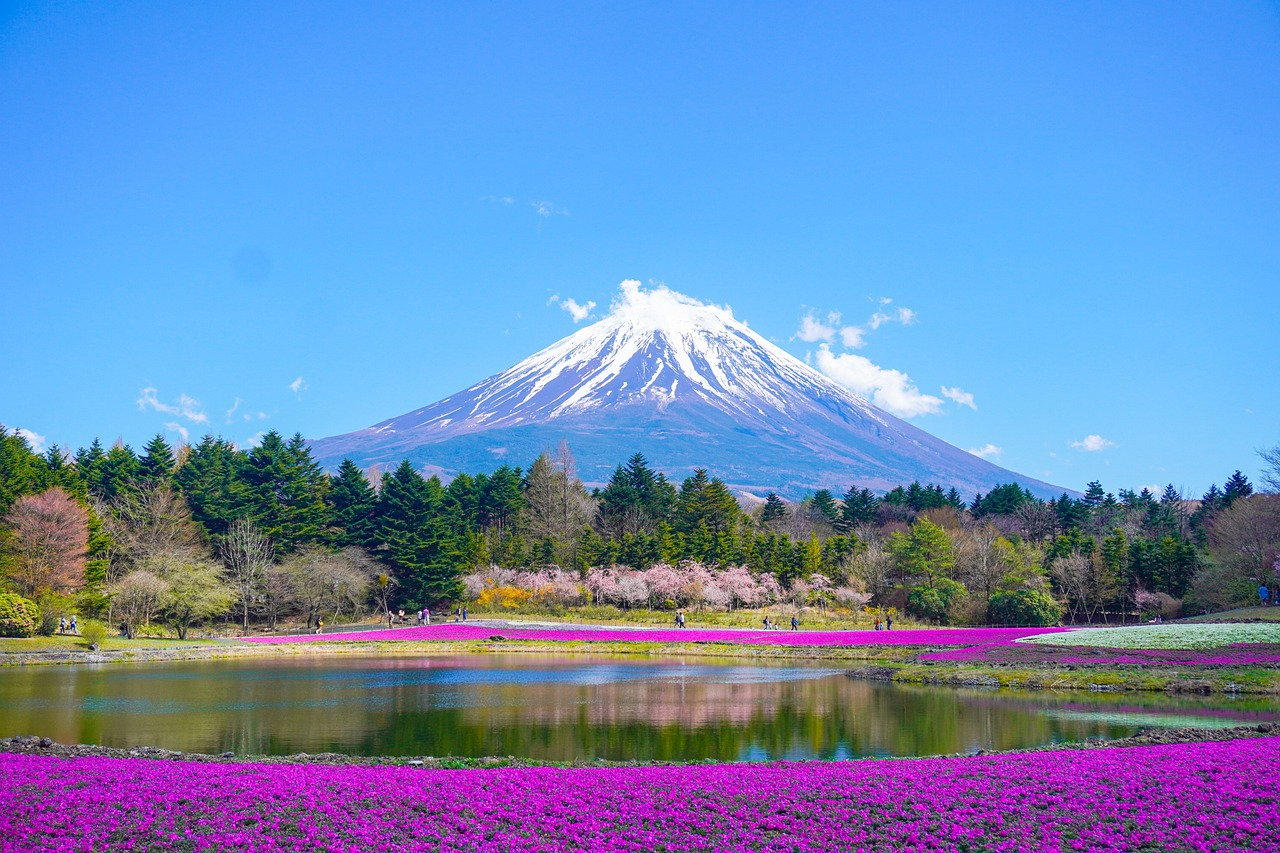
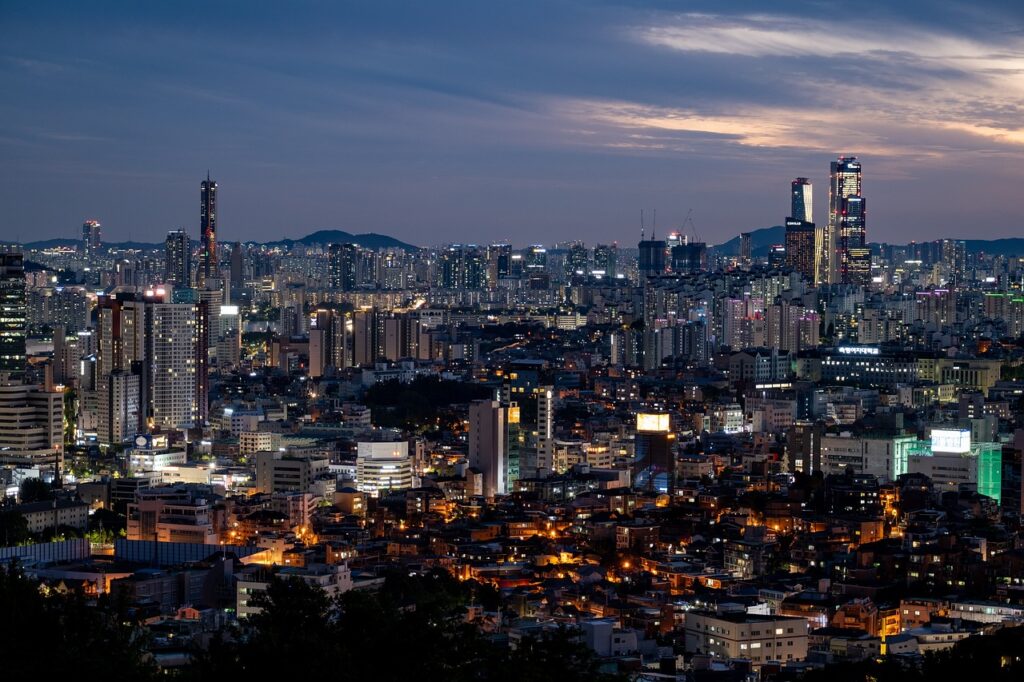
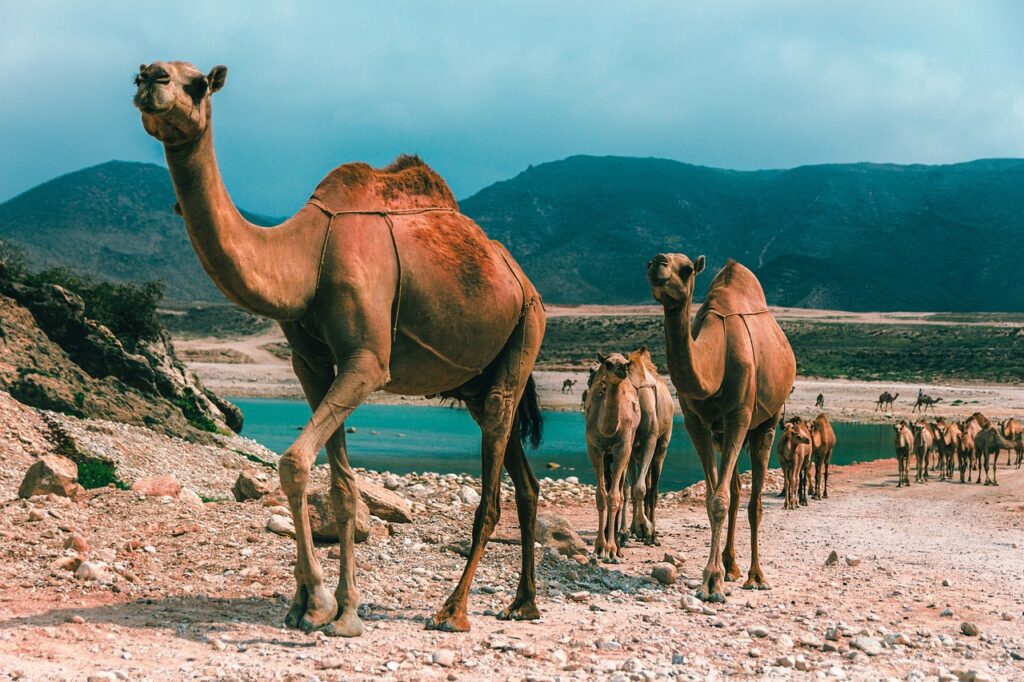
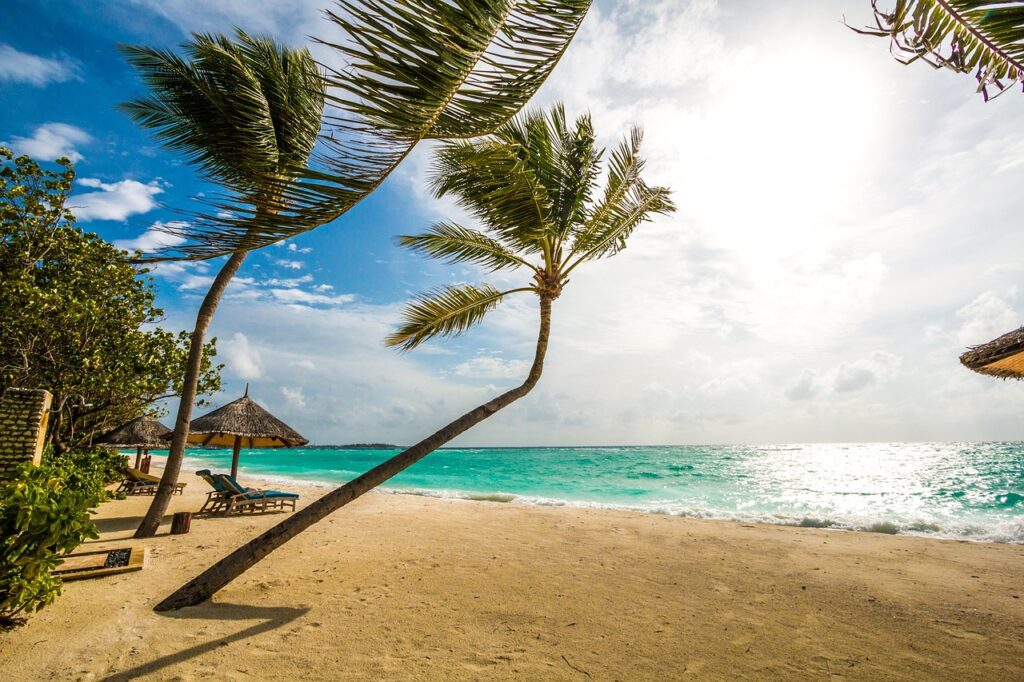
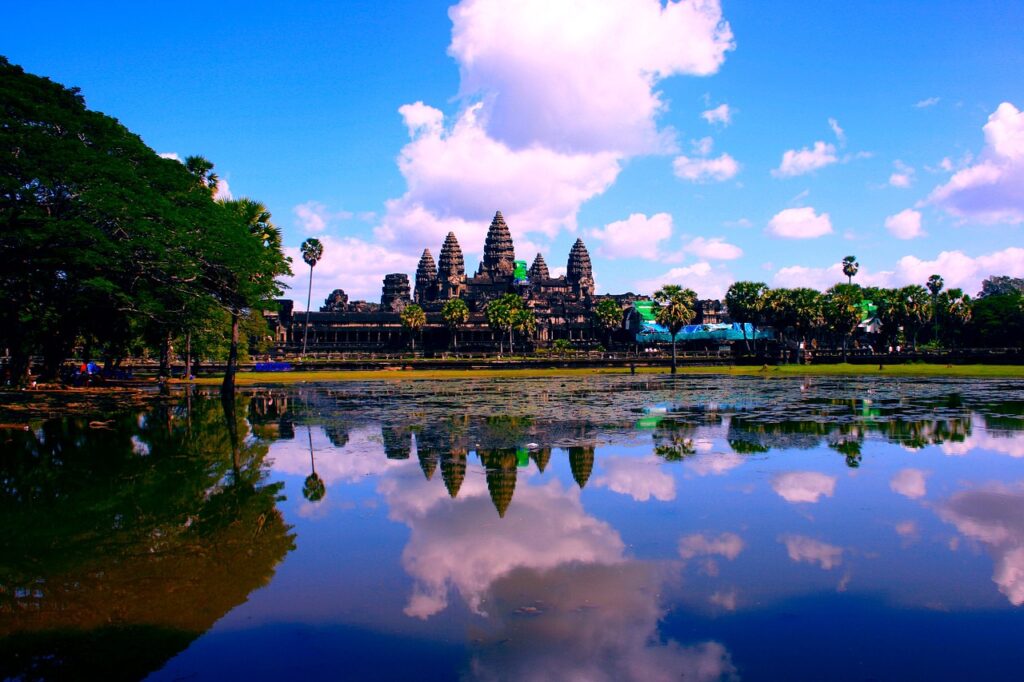

Best Booking Resources for Traveling in Asia
To make the most of your Asian adventure, it’s essential to have access to the best travel resources. Whether you’re exploring the bustling streets of Tokyo, the ancient ruins of Angkor Wat, or the serene beaches of Bali, here are some top booking platforms and resources tailored for travelers in Asia:
Accommodations: Agoda
- Agoda is particularly strong in Asia, offering a wide selection of hotels, hostels, guesthouses, and vacation rentals across the continent. With user reviews and competitive pricing, it’s an excellent resource for finding the perfect stay.
Flights: Skyscanner
- Skyscanner is a comprehensive tool for comparing flight prices across multiple airlines, making it easier to find the best deals for traveling within Asia and beyond. Its flexible search options are great for finding the cheapest times to fly.
Transportation: 12Go Asia
- 12Go Asia specializes in booking trains, buses, ferries, and even flights within Asia. It’s an invaluable resource for planning overland travel, especially in Southeast Asia, where navigating local transportation networks can be challenging.
Car Rentals: Rentalcars.com
- Rentalcars.com continues to be a reliable choice for booking rental cars in Asia, offering a range of options from local providers to international brands, ensuring you find the best deal and vehicle for your road trip adventures.
Travel Insurance: World Nomads
- World Nomads is recommended for travelers seeking comprehensive travel insurance that covers everything from medical emergencies to trip cancellations. Their coverage is adaptable to a wide range of travel activities, making it ideal for the adventurous traveler.
Activity Bookings: Klook and Viator
- Klook is particularly popular in Asia for booking activities, attractions tickets, and local experiences. It offers unique local experiences alongside standard tourist attractions, often at discounted prices.
- Viator, a TripAdvisor company, also offers a wide range of tours and activities across Asia, with the benefit of extensive traveler reviews to help you choose the best experiences.
SIM Cards and Connectivity: Klook
- Klook not only offers activities but also is a convenient platform for purchasing SIM cards and portable Wi-Fi devices for many Asian countries, ensuring you stay connected during your travels.
Language Apps: Google Translate and Duolingo
- Google Translate can be a lifesaver for navigating languages across Asia, from ordering food to asking for directions. Duolingo is useful for those who want to learn basic phrases in languages like Japanese, Korean, or Chinese before their trip.
Utilizing these resources can significantly enhance your travel experience in Asia, providing convenience, reliability, and often savings on your journey across this diverse continent. Whether you’re planning in advance or navigating on the go, these tools will help ensure your trip is memorable and hassle-free.
